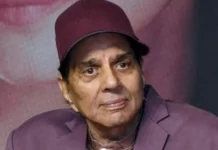
Amar G Bose, the Indian-American visionary entrepreneur and acoustics pioneer, famous for making high-quality Bose audio systems and speakers for home users, auditoriums and automobiles, has died.
He was 83. Bose’s death was announced by his company Bose Corp’s president, Bob Maresca, and the Massachusetts Institute of Technology, where Bose was on the faculty for more than 40 years.
Bose died at his home in Wayland, Massachusetts. His death was confirmed by his son, Vanu G Bose. “Bose founded Bose Corporation almost 50 years ago with a set of guiding principles centered on research and innovation,” Maresca was quoted by the New York Times as saying in a statement.
“That focus has never changed.”
Bose was born on November 2, 1929, in Philadelphia. His father, Noni Gopal Bose was a Bengali freedom fighter who was studying physics at the Calcutta University when he was arrested and imprisoned for his opposition to British rule. Noni Gopal Bose escaped and fled to the US in 1920 where he married an American schoolteacher.
At 13, Amar Bose began repairing radio sets for pocket money for repair shops in Philadelphia. As founder and chairman of the privately held company, Bose focused relentlessly on acoustic engineering innovation. His speakers, though expensive, earned a reputation for bringing concert-hall-quality audio into the home
.LONG TERM RESEARCH
And by refusing to offer stock to the public, Bose was able to pursue risky long-term research, such as noise-canceling headphones and an innovative suspension system for cars, without the pressures of quarterly earning announcements.
A perfectionist and a devotee of classical music, Bose was disappointed by the inferior sound of a high-priced stereo system he purchased when he was an MIT engineering student in the 1950s. His interest in acoustic engineering piqued when he realized that 80 percent of the sound experienced in a concert hall was indirect, meaning that it bounced off walls and ceilings before reaching the audience.
This realization, using basic concepts of physics, formed the basis of his research.
TAKING EVERYTHING APART
Amar Gopal Bose learned to channel his innate predilection for engineering into business endeavors from an early age. He grew up in “an all-white neighborhood in Philadelphia”, as the son of “an American, Charlotte” and Noni, an Indian refugee from the British Raj who started an import business.
Bose started “fooling around with electrical outlets and taking everything apart” as an infant, and developed an ear for music when his parents forced him to study the violin at age six.
Since Noni Bose’s import business failed with World War II’s advent, Amar Bose worked at odd jobs to support the Bose family. Despite the looming specter of constant “racist attacks” towards his family, Amar Bose brought in some income by repairing old model trains that shops could not repair.
Bose seized upon opportunity when he familiarized himself with transistor repair, as the war’s insatiable need for qualified repairpersons left only a few individuals to service electronics. Bose found so much business that he “opened a radio repair shop” which experienced much success. His “business acumen” became clear “even then as he cut a deal with shopkeepers, offering them 10% of whatever business he got through them.”
Bose avoided devices “which would only waste his time,” such as the radio, while he pursued his investigations into “mathematical side of communications theory” at MIT. After he finished writing his doctoral thesis, he ended his self-imposed sensory deprivation in 1956 by purchasing a “hi-fi loudspeaker based upon what [he] thought were meaningful specifications” in order “to enjoy his favorite classical music and to replicate the majestic sounds heard in the best concert halls of New York”.
MUSICAL TRAINING
However, his musical training enabled him to perceive the speakers’ low sound reproduction quality. Bose became curious as to the quality of contemporary speakers, and tested every brand of speaker that Radio Shack carried. His interest in acoustics took full bloom when he found that no speaker met his standards.
After Bose spent a year as a Fulbright scholar teaching “statistical communication theory at the National Physical Laboratory in Delhi, India”, he returned to MIT as an engineering faculty member. “He began a research project in psychoacoustics, investigating the relationship between reproduced sound as perceived by people and sound as measured by electronic instruments.”
Bose found that the ears and brain collaborate to collect sound from “the walls, ceiling [sic] and floor”; bouncing more components of a particular sound off those parts of the room improves one’s listening experience. MIT recognized his work as an official project in 1959, and his work yielded “several patents in electronics and power processing, amplification through switching techniques, and acoustics” by 1963.
When MIT relinquished its ownership of Bose’s patents to Bose, Bose started Bose Corp. with former MIT student Sherwin Greenblatt, who now serves as Bose’s president, and fellow professor Yuk Wing Lee’s life savings of $10, 000. Bose struggled to make ends meet until 1968, when Bose Corp. delivered its first commercial product based on its “better sound” technology, the “901® Direct/Reflecting® speaker system”.
Bose’s products possessed the “unique selling proposition” of size, as they occupied far less space than did the competition’s devices. Bose Corp’s near-overnight success became evident in 1970 when it bought out Prof Lee’s stake of the business with $260, 000.
Though Bose Corp ranks 204 on the “Forbes 500 Private” list of privately held companies, it holds a commanding 22 % share of the worldwide speaker market and $800 million annual sales.





